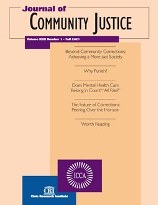Offender Employment in a Changing Marketplace
Author: Donald G. Evans.
Source: Volume 24, Number 04, Summer 2015 , pp.4-6(3)

next article > |return to table of contents
Abstract:
In the author’s early days as a probation officer, the emphasis was to assist, advise, and befriend; later, after the “nothing works” era, there was a punitive turn to managing offenders. We are now emerging, as a result of empirical research and decades of emphasis on “what works,” toward case management methods that resemble the earlier emphasis—the value of a therapeutic alliance, assisting offenders to reduce their risk of reoffending, motivating them to change behavior. One aspect of those early days in probation was the practical emphasis on employment, and there were probation officers who were excellent at creating lists of employers who would employ probationers, usually in construction, painting, etc., and some even provided avenues for apprenticeships in the trades. The research in those days suggested that stable employment prior to incarceration was a reasonable indicator of an offender’s ability to secure a job following release and that lack of a stable employment history before imprisonment contributed to a more difficult time in securing post-prison employment. Today, we know that, on average, two-thirds of offenders admitted to prison are unemployed and three-quarters of released offenders leave prison without a job to go to. This article looks at some of the important ways in which, when it comes to finding jobs for offenders, we are not really working with the same environment or population, even if our methods might seem to hearken back to past approaches.Keywords: Reentry and employment opportunities
Affiliations:
1: Journal Editor.